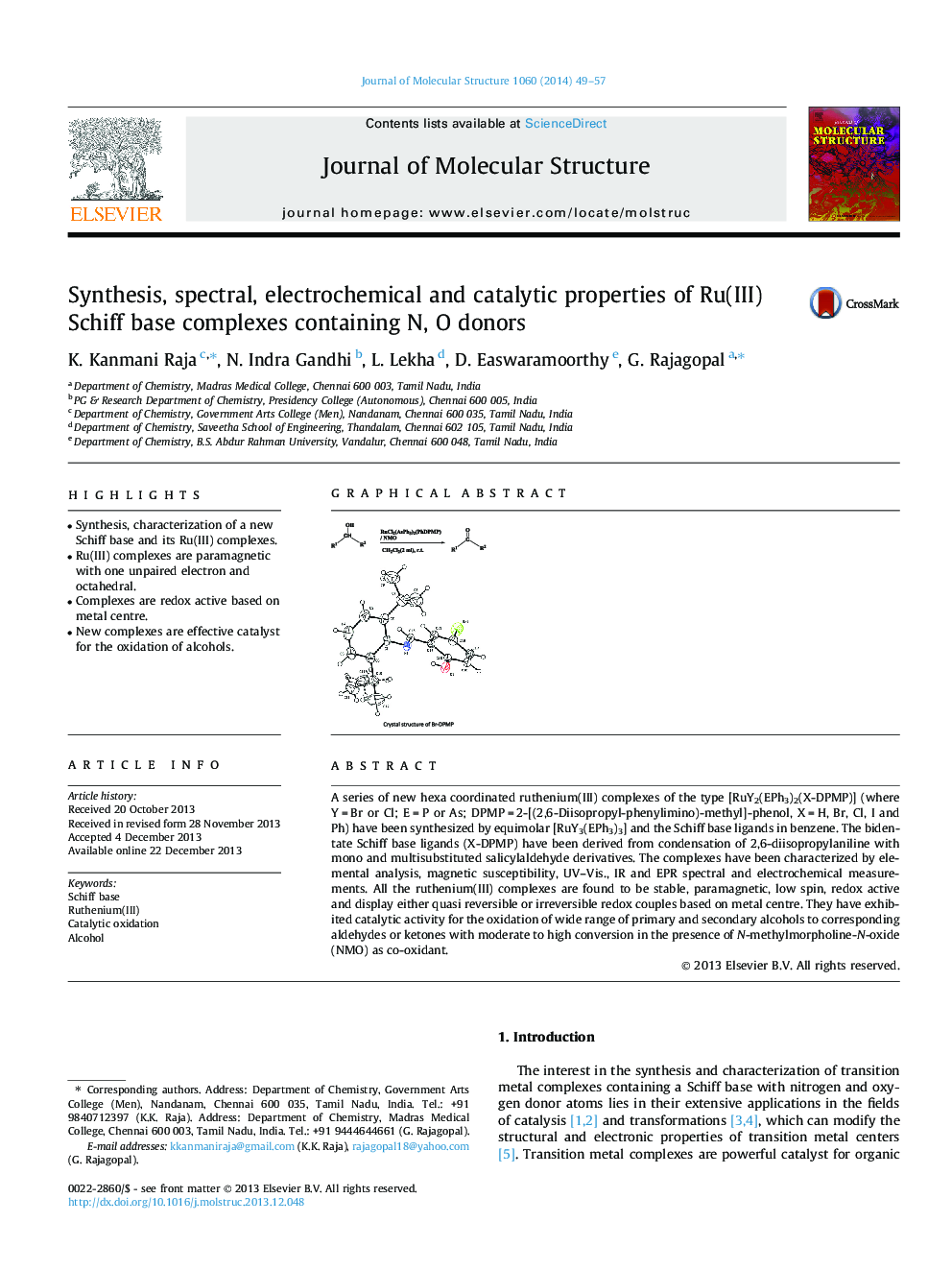| Article ID | Journal | Published Year | Pages | File Type |
|---|---|---|---|---|
| 1405619 | Journal of Molecular Structure | 2014 | 9 Pages |
•Synthesis, characterization of a new Schiff base and its Ru(III) complexes.•Ru(III) complexes are paramagnetic with one unpaired electron and octahedral.•Complexes are redox active based on metal centre.•New complexes are effective catalyst for the oxidation of alcohols.
A series of new hexa coordinated ruthenium(III) complexes of the type [RuY2(EPh3)2(X-DPMP)] (where Y = Br or Cl; E = P or As; DPMP = 2-[(2,6-Diisopropyl-phenylimino)-methyl]-phenol, X = H, Br, Cl, I and Ph) have been synthesized by equimolar [RuY3(EPh3)3] and the Schiff base ligands in benzene. The bidentate Schiff base ligands (X-DPMP) have been derived from condensation of 2,6-diisopropylaniline with mono and multisubstituted salicylaldehyde derivatives. The complexes have been characterized by elemental analysis, magnetic susceptibility, UV–Vis., IR and EPR spectral and electrochemical measurements. All the ruthenium(III) complexes are found to be stable, paramagnetic, low spin, redox active and display either quasi reversible or irreversible redox couples based on metal centre. They have exhibited catalytic activity for the oxidation of wide range of primary and secondary alcohols to corresponding aldehydes or ketones with moderate to high conversion in the presence of N-methylmorpholine-N-oxide (NMO) as co-oxidant.
Graphical abstractFigure optionsDownload full-size imageDownload as PowerPoint slide
